Best PHP Guide to Buy in December 2025
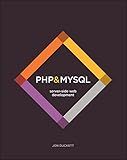
PHP & MySQL: Server-side Web Development


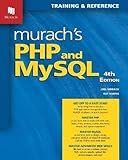
Murach's PHP and MySQL (4th Edition) Professional Web Development Guide for Learning PHP & MySQL Database Programming - Beginner-Friendly Coding Book with MVC Pattern & Security Features


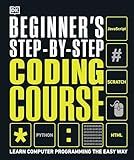
Beginner's Step-by-Step Coding Course: Learn Computer Programming the Easy Way (DK Complete Courses)


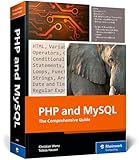
PHP and MySQL: The Comprehensive Guide to Server-Side Web Development with PHP 8 – Build Dynamic Websites with Database Integration, Security, and More (Rheinwerk Computing)


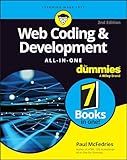
Web Coding & Development All-in-One For Dummies



Front-End Back-End Development with HTML, CSS, JavaScript, jQuery, PHP, and MySQL


In PHP, both POST and GET are methods used to send data from a client (web browser) to a server. However, there are some important differences between the two:
- Data Transmission: GET: Data is appended to the URL and is visible in the browser's address bar. It has a limit on the amount of data that can be sent (maximum URL length). POST: Data is sent in the body of the HTTP request and is not visible in the URL.
- Security: GET: Data is less secure as it is visible in the URL, which means sensitive information like passwords should not be sent via GET. POST: Data is more secure as it is not visible in the URL.
- Caching: GET: Data can be cached by the browser or proxy servers, which means that subsequent requests can retrieve data from cache instead of from the server. POST: Data is not cached by default, so every submission requires a new request to the server.
- Reliability: GET: Data can be bookmarked, shared, and easily accessed again by using the same URL. POST: Data cannot be bookmarked or shared using the URL as it is not visible.
- Data Type: GET: Data is sent as a string and can be easily accessed using $_GET superglobal in PHP. POST: Data can be sent with various data types, including text, files, or binary data, and can be accessed using $_POST superglobal in PHP.
It is important to choose the appropriate method (POST or GET) based on the requirements and considerations of your application.
What is POST in PHP?
POST in PHP is a method used to send data to the server for processing. It is one of the two widely used methods for submitting data from a HTML form, the other being GET.
When a form is submitted using POST, the data is sent as part of the HTTP request body, rather than as part of the URL. This makes it a more secure method for sending sensitive or large amounts of data, as the data is not visible in the URL.
In PHP, the data sent via POST can be accessed using the $_POST superglobal variable. This variable is an associative array where the keys are the names of the form fields and the values are the submitted data. The data can then be processed, validated, and stored as required by the PHP script.
What is GET in PHP?
GET is a method used in PHP to retrieve data from a specified resource by sending data in the URL. It is one of the two commonly used HTTP methods, along with POST. With GET, the data is appended to the URL as a query string, making it visible and less secure for sensitive information.
In PHP, the $_GET superglobal variable is used to collect data sent through a GET request. It is an associative array that contains key-value pairs of the parameters in the URL. This data can be accessed and used in PHP scripts to perform various actions, such as fetching data from a database, generating dynamic content, or filtering data.
Which method is more secure, POST or GET?
In general, the POST method is considered more secure than the GET method.
The GET method sends data as part of the URL which makes it visible in the browser's address bar and in browser history. This means that sensitive information such as passwords or credit card numbers can be easily seen and accessed by others. Additionally, since the data is included in the URL, it can be logged by various systems like web servers or proxies, potentially exposing sensitive information.
On the other hand, the POST method sends data in the body of the HTTP request, rather than in the URL. This makes the data less exposed and more hidden from casual observation. The POST method also allows for larger amounts of data to be sent and is not restricted by URL length limitations.
Nevertheless, it's important to note that neither method provides inherent security on its own. Both methods can be intercepted or manipulated by attackers. Proper security measures, such as encryption, authentication, and input validation, should be implemented in addition to the choice of POST or GET to ensure the overall security of the application.
When should you use POST over GET in PHP?
In PHP, you should use the POST method over GET in the following scenarios:
- Creating or updating data: When you need to submit data to a server for creating or updating a resource, such as adding a new user or updating user details, it is recommended to use the POST method. This is because the POST method sends data in the body of the HTTP request, making it more secure for sensitive information like passwords or other private data.
- Large data submissions: If you are submitting a large amount of data, such as uploading a file or submitting form data with multiple fields, it is better to use the POST method. The POST method does not have any length limitations for data, whereas the GET method has a limitation on the length of the URL.
- Data security concerns: If you have data that needs to be kept confidential or needs to be hidden from the URL, it is best to use the POST method. The data sent through the POST method is not visible in the URL bar, unlike the GET method where the data is appended to the URL.
- Non-idempotent operations: If your request causes side effects on the server or modifies the state of the application, it is more appropriate to use the POST method. The POST method is considered non-idempotent, meaning multiple requests with the same data may have different outcomes each time.
In summary, while the GET method is suitable for retrieving data, the POST method is commonly used when creating, updating, or submitting large or sensitive data to the server.
How are POST and GET requests typically used in PHP forms?
In PHP, POST and GET requests are used to pass data between a form and a server.
- GET Request: Typically used to retrieve data from the server. Data is appended to the URL as query parameters. Visible in the URL and can be bookmarked and shared. Used for non-sensitive data and read-only operations. Maximum length of data is limited. Examples: Searching, filtering, pagination.
- POST Request: Typically used to submit data to the server. Data is sent in the request body, not visible in the URL. Not bookmarked or shared unless explicitly done. Used for sensitive data (like passwords) and write operations. No limitations on the length of data. Examples: Submitting forms, creating/inserting data, modifying data.
In PHP forms, you can choose to use either POST or GET as the method attribute in the HTML <form> element. For example:
In PHP, you can access the form data using the $_POST or $_GET superglobal arrays, depending on the request type specified in the form's method attribute. For example, to access the submitted "name" field value:
$name = $_POST['name']; // Accessing data from POST request $name = $_GET['name']; // Accessing data from GET request
It's worth noting that POST requests are more secure compared to GET requests as the data is not visible in the URL. Hence, sensitive information should always be sent using POST method, especially when dealing with authentication or handling user login details.
How to switch between POST and GET methods in PHP forms?
To switch between POST and GET methods in PHP forms, you need to modify the "method" attribute of the tag.
By default, the method is set to "GET", but you can change it to "POST" to send the form data via POST method.
Here's an example:
- Sending form data via GET method:
In this case, the form data will be appended to the URL as query parameters.
- Sending form data via POST method:
When using the POST method, the form data is sent in the body of the HTTP request, so it's not visible in the URL.
In PHP, you can access the form data using the $_POST superglobal if the method is POST, or $_GET if the method is GET.
